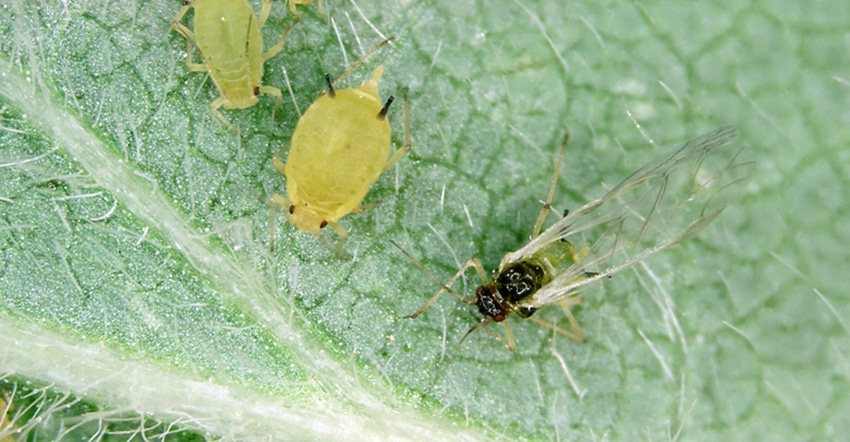
Now that corn is finished pollinating, concerns with insect issues have returned in soybeans, as Japanese beetles have appeared in Iowa soybean fields, defoliating some upper-canopy leaves. Also, Iowa soybean growers are asking "Where are the aphids?" They haven’t seen this pest yet this summer.
Soybean aphids have been at low levels in Iowa so far, notes Iowa State University Extension entomologist Erin Hodgson. However, some farmers, especially in northern Iowa, are concerned that populations of this insect will develop and increase with the onset of predicted cooler weather.
Evaluate percent of damage
In general, defoliators like Japanese beetle need to remove about 20% of the leaf tissue on an entire plant and across the whole area to require treatment, says Meaghan Anderson, ISU Extension field agronomist in central Iowa. “Feeding is typically worse along field edges or waterways, so it's important to scout the whole field or area to determine the severity of the issue,” she adds.
The article Estimating soybean leaf defoliation, from the University of Nebraska-Lincoln, describes a scouting procedure for defoliation in fields. Soybeans are remarkably good at compensating for leaf tissue loss. To see the stages, or percentages, of leaf defoliation, see the Iowa State University web page.
Don’t spray too soon for Japanese beetle
As some areas are getting drier, it is even more important to wait until this 20% defoliation threshold is reached before you spray insecticide for Japanese beetle, Anderson says. That’s because of the potential risk of flare-ups of two-spotted spider mites that can occur. “Cooler temperatures will mediate this risk, but I expect we'll warm back up again,” she notes.
ISU’s Hodgson has an article on Japanese beetle thresholds and management in corn and soybeans. Be careful, she says, not to confuse Japanese beetles with another similar looking beetle called a chafer.
Regarding a soybean aphid infestation this summer, “we were hearing crickets until late in the third week of July,” Anderson says, “when crop scouts spotted them in several areas across the state, including central Iowa. Scouting for soybean aphids can be tricky, especially if populations are very low, but keeping an eye out for the brightly colored (red-orange) Asian lady beetles can be helpful.”
If aphids found, don’t treat too soon
The Asian lady beetles are avid predators of soybean aphids. If aphids are found, it's important to monitor populations and not treat too soon, Anderson says. The economic threshold for aphids is 250 per plant, but late-season accumulation of aphids (after R5 growth stage of the soybean plants) does not impact yield as significantly as an earlier infestation does. You can read more on management recommendations and Erin Hodgson's 2017 insecticide evaluations.
“Here in northwest Iowa, the early-planted soybean crop is in R4 (full pod) growth stage,” says Paul Kassel, ISU field agronomist at Spencer. “Farmers in the last two weeks of July were considering fungicide application on some of the better-looking fields, which is a difficult decision with the currently low commodity prices. Soybean aphids have been at very low levels; however, farmers are concerned that soybean aphid populations will develop with the onset of the predicted cooler weather."
About the Author(s)
You May Also Like




